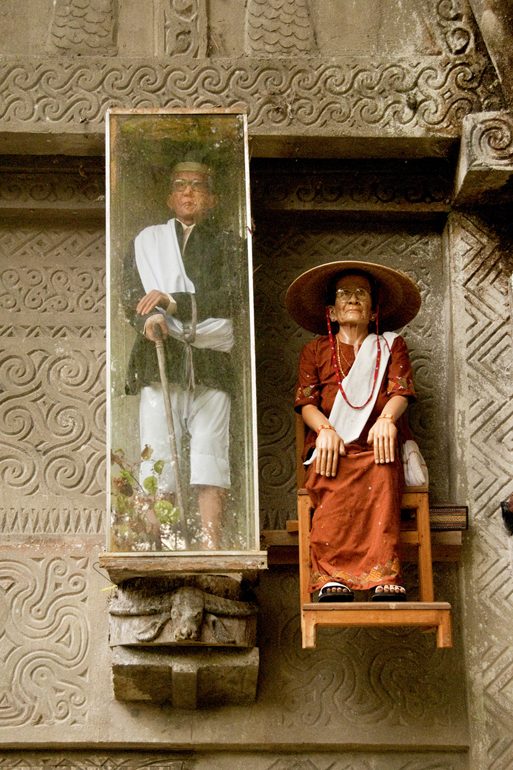
A gong sounds and the first buffalo is sacrificed to symbolize the moment of Du'nang's true death and the release of his spirit to begin the ascent to heaven. Soon a second buffalo is killed to assure the spirit will make contact with its ancestors.
Then young women in brightly colored traditional garb, and adorned with dazzling jewelry, enter the plaza square and begin the funereal dance. Moving gracefully to their own inner rhythms, they disregard the rapid beat of the drums. The dirges they sing are soft, almost under the breath, adding to the solemnity of the moment.
When the dance is over the men, in stark contrast, lunge into the plaza center with frenzied chanting. They tote wailing pigs destined for sacrifice. Soon the entire plaza is filled with the clamor of men and pigs. Then the procession moves to the sacrificial arena where there are louder pig protests, followed by the preparation of peppers, pork, and blood, a Toraja delicacy, which is then roasted in bamboo vessels over wood fires. Much is consumed on the spot but there is plenty to cart home for future sustenance.
Over the next several days hundreds of pigs and 32 buffalo are sacrificed, a testimony of Du'nang's esteem in his village. The meat is distributed to the guests and relatives using a complex system of rules based on rank and obligation. During the days or weeks of ceremony the body of Du'nang will continue to lie in state in his home, awaiting the proper time for burial of the flesh. At that time he will be placed in a crypt chiseled out of a limestone cliff, another rite of passage reserved only for the nobility. A tao tao, or carved likeness of the deceased, will be placed at the entrance to his vault.